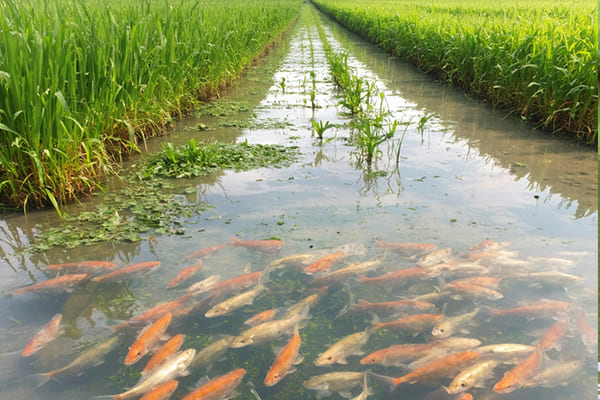China’s tilapia farming is diverse and fascinating, blending various techniques that cater to different environments and customer preferences. At YANGHUA, we’ve come to understand these methods deeply, as we strive to supply only the finest quality fish for our customers. So, how exactly is tilapia raised in China?
In China, tilapia is primarily raised in reservoirs, ponds, rice fields, and even cages in lakes or rivers. These methods create healthy, controlled environments where fish can thrive, prioritizing both quality and sustainability.
Each farming approach has its own advantages, and I’ll take you through each one, so you can appreciate the unique methods behind each fillet.
What is the method of raising fish in reservoirs?
Reservoir fish farming involves raising tilapia in vast, open reservoirs that mimic wild conditions. Reservoirs are typically large, deep water bodies, often created in areas with abundant natural resources.
What Are the Characteristics of Reservoir Fish Farming?
In reservoir farming, tilapia grow in a more natural, expansive environment, feeding on naturally occurring algae and insects.
| Reservoir Fish Farming | Advantages |
|---|---|
| Large natural space | Allows natural fish behavior |
| Minimal intervention | Less human interference |
| Rich flavor profile | Closer to wild-caught taste |
What Is Pond Fish Farming?
Pond fish farming is the most common and traditional method used for tilapia in China. Large, carefully managed ponds provide an ideal environment where tilapia grow in controlled yet natural conditions.
In pond farming, tilapia live in large, shallow ponds filled with clean water. Farmers monitor water quality and fish health continuously to ensure optimal growth.
Benefits of Pond Farming
The large surface area of the pond gives tilapia plenty of room to grow and feed on natural algae and small plants, which enhances the flavor and texture of the fish. Farmers also regulate the nutrients in the water to prevent overcrowding, which can stress the fish. This slower, more natural growth process is part of what makes pond-raised tilapia popular among customers who value quality over speed.
| Advantages of Pond Farming | Details |
|---|---|
| Natural Environment | Mimics a natural ecosystem for better fish welfare |
| Higher Quality | Results in firmer texture and enhanced flavor |
| Controlled Water Quality | Regular monitoring for optimal fish health |
How Does Fish Farming Work in Rice Fields?
China’s rice field farming technique is a unique and sustainable approach where tilapia are raised in rice paddies. This method integrates aquaculture with agriculture, creating a symbiotic relationship between the fish and the rice plants.
In rice field farming, tilapia are introduced to rice paddies, where they feed on algae, insects, and small plants, while their waste enriches the soil, benefiting the rice crop.
The Harmony of Fish and Rice
In this environment, fish naturally fertilize the rice, reducing the need for chemical fertilizers and pesticides. At the same time, the rice plants provide shade and shelter for the fish, maintaining a comfortable temperature and protecting them from predators. This method is not only eco-friendly but also creates a natural, chemical-free environment for tilapia, resulting in healthier, more flavorful fish.
| Rice Field Farming | Benefits |
|---|---|
| Eco-friendly setup | Reduces need for chemicals |
| Natural fish diet | Results in healthier, more natural fish |
| Mutual crop benefits | Fish fertilize rice, rice shades fish |
How Does Fish Farming in Cages Work?
In China, tilapia are sometimes raised in cages within lakes or rivers. These cages are submerged in natural water bodies, allowing fish to grow in a clean, flowing water environment.
In cage farming, tilapia are confined to mesh cages in lakes or rivers, where they benefit from natural water flow and ecosystem balance.
A Controlled Yet Natural Setup
Cage farming lets fish benefit from the movement and natural nutrient levels of flowing water while maintaining control over their space and diet. Fish in cages are safe from predators and can be closely monitored, yet they still grow in a more natural environment than in factory setups. This method also reduces the risk of disease spread because of the constant water flow, leading to healthier fish overall.
| Cage Fish Farming | Benefits |
|---|---|
| Natural water flow | Keeps fish healthier |
| Protection from predators | Fish are secure from external threats |
| Environmentally balanced | Works well within ecosystems |
Conclusion
China’s diverse tilapia farming methods highlight a commitment to quality and sustainability. By utilizing reservoirs, ponds, rice fields, and cage systems, Chinese farms create conditions that allow tilapia to thrive naturally. At YANGHUA, we’re proud to source our tilapia from these environments, ensuring that every fish meets our high standards for freshness, flavor, and safety.






